MARCO ISLAND
In March of 1964, less than a year and a half after opening their first community, the Mackles announced the biggest and most important business venture of their career - Marco Island.
There are two stories to Marco.
The first is one of of incredible vision, of the excitement of planning, of the challenges of development and of the large scale building operations as the Mackles transformed the mosquito infested swamp. It is the story of international acclaim and of phenomenon sales results - all culminating in the creation of the fabulous community and destination resort that it is today.
The other story is that of the pursuit of the dredge and fill permits. It starts with the first dredge and fill permit which took nine days to apply for and receive. It goes on to tell of the environmental movement of the 60's and 70's - one of the great liberal causes of that era. It is a story of Dad's determination to deliver on the Mackles' promise and of his conviction that justice would prevail. It is a story of heart wrenching battles with environmentalists and bureaucrats, cliff hanging decisions, a long string of victories wiped out by one devastating and totally unexpected denial, of the near bankruptcy that the denial brought to the company, of the personal toll it took on the Mackle Brothers and finally of the ultimate fight to survive the blow.
Since Marco was such an important part of the larger Deltona story, I will relate it separately from the other achievements that were ongoing at the company between 1964 to 1976 and come back to those later.
MARCO BEFORE MACKLE
The Mackles first business visit to the island was sometime in 1962 or 1963.
Marco had - for eons - been simply the largest island in the chain know as the "Ten Thousand Islands". The Ten Thousand Islands forms the transition between the Everglades and the Gulf of Mexico from Naples to the Miami. In 1963 Marco was little known, it was as remote as you could get in Florida and a significant percentage of it was mangrove swamp. The nearest town to Marco was Naples, a forty five minute drive away. Miami was a two hour car trip over the two lane Tamiami Trail.
Two tiny fishing villages, Marco and Goodland, were the only habitations on Marco. A "missile tracking station", a few acres in size, anchored the south end of the beach. There was a gorgeous - four mile - white sand beach on the west. The island was surrounded by the Marco River to the north and east, Caxambas Pass to the south and the Gulf of Mexico to the west. The north-center part of the island was barely above sea level and covered by a mixture of pines and tidal plains. A wide fringe of mangroves covered the north, east and south parts of the island nearest to the water. Mosquitoes thrived in great hordes.
The exception to salt flats, pinelands and mangroves was an unusually high but narrow ridge around Barfield Bay. Both Horrs Island on the east side of the bay and the area on Marco Island west of the bay were high and rolling with some elevations as much as 55 feet above sea level. These areas were covered with unusual tropical foliage including Gumbo Limbo and Royal Poinciana trees. There was one old wooden home and cistern on the Marco Island side of the ridge on - what was said to be - the highest point in South Florida.
Except for the two tiny fishing villages there were no human inhabitants.
Hundreds of years before the Calusa indians had lived on the island. Evidence of their existence has been found on Horrs Island, in the Caxambas area and on the northwest quadrant of the island. In the first half of the century clams were harvested on the Caxambas pass at the south end of the island. A railroad had once served to transport clams from the island. The clam factory and the railroad had long been abandoned and little evidence of it remained.
Marco Island was known - to aficionados - for its wonderful backwater fishing. The Marco Lodge on the north end of the island, with maybe twenty rooms, provided rustic but comfortable accommodations and dockage on the Marco River. Fishing charters were available with local guides. Anglers sought Tarpon, Snook and Redfish among many other species of game fish.
The scenic wonder of the island was the incredibly beautiful four mile mile, white sand crescent beach. The beach was accessible only by boat or - for the adventurous - by vehicle over a long, narrow sand trail. Sanibel Island - seventy five miles to the north - was better known for its shelling but more knowledgeable shellers knew that Marco was its equal. It was just harder to get to!
One lone wooden bridge, which was built in the thirties, provided the only access to the island from the mainland. The bridge was unique. In order to open it for boat traffic, the bridge tender had to manually turn a long - perhaps10 foot - crank handle by walking with it in a circle. As he turned the crank handle, the bridge would slowly turn horizontally until it was perpendicular to the roadway providing adequate room for boat passage. The process of opening and shutting the bridge would take perhaps fifteen minutes. A driver caught in the process would simply turn his engine off and enjoy the scenery and the show. The bridge was - at the time - one of two such bridges remaining in Florida.
Three years before the Mackles arrived - in September of 1960 - hurricane Donna, a category 4 storm, devastated Marco and much of Florida. After passing through the Keys, Donna made a direct hit on the island. Water was said to have covered the island to a depth of twelve feet or more. Water marks could still be seen high up on surviving palm trees.
There was no fresh water supply to the island. What drinking water there was came from shallow wells or was hauled in.
The mangrove swamp that covered most of the island was an indication of the poor soil conditions that lay beneath. Borings indicated muck down as deep as forty feet. Dredge and fill operations far beyond anything the Mackles had ever undertaken would be needed. Miles and miles of seawall would be required. From a construction standpoint alone it would be one of the largest development projects ever undertaken in Florida.
From the many times he told the story, Dad's first visit to the island was obviously memorable. After driving as far as they could and walking the rest of the way to the beach they were forced to literally run back to their car to keep from being "eaten alive" by the mosquitoes!
Nevertheless that first view of the beach was enough to give birth to the dream that was to transform Marco Island.
MARCO ISLAND DEVELOPMENT CORPORATION (M.I.D.C.)
The property being considered, which encompassed a major portion of the island, was owned by the Barron Collier family. Barron Collier Sr. had acquired the property in the twenties and he and his offspring had been unsuccessful in several attempts to develop the land. Barron Collier Jr. represented the family and he in turn was represented by Norman Herron who had been with the Collier family for many years. The source of the family wealth was the elder Colliers advertising interests. When he passed away in 1939 he left an estate which included over 900,000 acres of land - including Marco Island - to his sons. By the 1960s two of the sons had passed away and their interests were held by their descendants.
While the Collier family was probably the single largest property owner in Collier County the county's name did not originate with them but with a Captain W. T. Collier who was not related.
According to Douglas Waitley, author of The Last Paradise: The building of Marco Island the Colliers had - some years earlier - offered the Marco property to the state of Florida for $1,000,000 but the state had turned it down.
Baron Collier Jr. and Norman Herron had approached the Mackles as early as 1962. After visiting the island, Dad and his brothers entered into negotiations with the Collier family.
In March of 1964, the formation of Marco Island Development Corporation (M.I.D.C.) and plans to develop Marco Island were made public. Marco Island Development Corporation would be owned 50% by The Deltona Corporation and 50% by an investment group whose major interests were held by Peter N. Thomson, Canadian investment and industrial executive, Gerry Brothers & Co. a New York private investment firm, Baron Collier Jr., and Mrs. Isabel Collier Reed, sister-in-law of Barron Collier Jr.
Deltona, in addition to sharing 50/50 would receive fees of 5% for all construction and development activity and 3% for all sales generated.
The original land acquisition was for 10,300 acres - 6,700 acres on Marco Island itself as well and 3,600 on adjoining islands as well as the mainland.
MARCO PLANNING BEGINS
As to the remoteness, the lack of water supply, the threat of hurricanes, the mosquitoes and the other obstacles to development, Jim Vensel was fond of saying,
"There are no such things as problems, there are only opportunities for dynamic solutions!"
This very much characterized the Mackle organization's approach to things. They embraced the challenge of Marco with enthusiasm and a "can do" attitude.
The Mackle team began finding "dynamic solutions".
The water supply problem would be solved by Jim Vensel and Art Day, through the development of well fields ten miles away on the mainland, a ten mile water supply line to the island and a water treatment plant in the island. Sewer disposal for the housing area would be provided by the same division with a plant on the island.
Under the direction of Bill O'Dowd and Earl Cortright Sr. a high production sea-wall operation - refining the processes developed at Key Biscayne, Pompano and Port Charlotte - was planned. Land based drag lines along with water based dredges would do the major earth moving. Hydraulic pans and bulldozers would move the fill into its final position.. Eventually three water based dredges, the Hunter a 24" dredge, the Papoose, a 20" dredge and the Islander a 12" dredge would work simultaneously with a virtual army of land based equipment transforming the swamp into an island paradise. Work Orders were produced. Cost estimates were done.
The Mosquito problem - engineers proposed - could be tamed by building a dike around the entire island and installing pumps at strategic locations. It was believed that mosquitoes could be controlled by keeping the swamp waters at a constant level. The science of the day said that the mosquito larvae would only hatch as tide or other factors changed the water level. So once the dikes were completed a system of pumps would work night and day to maintain a constant water level.
An airborne and land based mosquito spraying program would be established as well.
The Master Plan for Marco Island, authored by Jim Vensel, would feature thousands of waterfront single family lots, a central commercial core, a golf courses and, along the beachfront and Caxambas pass, multi-family and hotel sites. Later acquisitions would add two more golf courses and more home and apartment sites at Marco Shores. And still there would be acreage for "future development".
The high rolling land and remarkable beauty of the Barfield Bay area made it a natural site for some of the more high-end product to be offered. The Marco side of the bay would form the "estate" area of Marco and Horrs Island would later be planned as an exclusive gated community for the largest homes in the area.
A one thousand foot stretch of the beach was set aside for the exclusive and private use of island residents.
Neil Bahr began to work with Jimmy to apply the coordinated growth plan to the project. And Neil saw to it that Marketing, Advertising and Publicity plans were in place.
Neil came up with the moniker "The Platinum Coast" to describe the largely unknown Southwest part of the state. "The Platinum Coast" would become recognized world wide as a desirable destination much as Southeast Florida's "Gold Coast" had been thought of for years. In fact "The Platinum Coast" - which is now commonly used in that part of the state - was copyrighted by The Deltona Corporation.
Herb Savage began to design the initial buildings along with two model groups - one for interior home sites and one for waterfront lots.
As with other Deltona communities, the single family home sites and some of the commercial properties would be sold on the installment land basis.
But most of the commercial property and all of the beachfront was to be retained by the company to be developed when the island reached maturity. These properties would be the "pot of gold at the end of the rainbow".
Between the formation of the joint venture and the opening less than ten months would pass. In that time a well field was established ten miles away on the mainland. A water treatment and a sewer treatment plant were constructed. The first roads, canals and seawalls were put in. Two lines of model homes - an interior lot group and a waterfront lot group - were designed, built and decorated. A sales and administration building was designed and built. The first phase of the Marco Beach Hotel was designed and constructed on the beachfront. The clubhouse and the first nine holes of the Marco Island Country Club were put in. Started but not completed at the opening - they would be ready by the time the first residents moved in - were the initial shopping center and the Marco Island Yacht Club.
THE GRAND OPENING & THE EARLY YEARS OF MARCO ISLAND
The opening of Marco Island, on January 31, 1965, was a major event in the Gulf Coast and in the history of The Deltona Corporation.
In place were the sale & administration building in the center of the island. It was the first sign of civilization after crossing the one and only bridge and driving through several more miles of mangroves. Also completed at opening were the model homes and the original Marco Beach Hotel a 50 room two story facility with a pitch and putt golf course modeled after the very popular one at the Mackles Key Biscayne Hotel. The yacht club and golf course were still under construction at the opening.
In the sales office was a huge model of the future Marco Island. A tour of the island included a ride on a pontoon "party" boat and the view from a lookout tower constructed on the high point of the island. The view from the tower was awesome!
Marco Island was a wild and wooly place in the early days. Not mentioned in the brochures were the isolation of the island, the lack of night life (a popular Friday night attraction were the pari-mutual crab races at the hotel), the not yet conquered mosquito problem and the fact that the remoteness seemed to attract - to say it nicely - the pioneer - or not so nicely - the characters - those with a few cards missing from their decks - union "bad boys" - and individuals who could not fit in to more civilized surroundings.
It was a new frontier. It was a part everglades that had ambitions to be another Palm Beach. It was a sleepy west Florida fish camp being turned into a fabulous tropical resort. It was Cheyenne in 1860. It was Miami Beach in 1910.
Traveling the two lane Tamiami Trail from Miami to Marco was a long, tiring and dangerous drive. So - early on - a long street platted for future home sites was put in and widened to serve as a runway and airport for private planes.
The mosquito dike was being dug around the entire perimeter of Marco. The dikes were in place early on and kept at work for many years.
The other - more apparent - system of mosquito control was the combination of land based and airplane mounted mosquito spray equipment. The company did not want to rely on the county for such services so a department was established at the island for this duty. This came under the direction of Ray Anderson, Chief Pilot, for the company.
Most apparent of all was the sight of a spray plane piloted by the infamous Oscar Espejo attacking the populated part island at an altitude of a only few feet. Oscar was determined to apply his cloud of insecticide in every nook and cranny of every tree, plant and building on the development. It was a common story: beach goers diving to the ground in fear of their lives to keep from being hit by the propellers of the plane. Oscar was definitely one of those characters that I spoke about.
As far as I know no one was ever hit by Oscar and with his program of mosquito control the problem was reduced to manageable levels.
Some enterprising early resident read that the mosquito problem could be dealt with by establishing Purple Martin birdhouses around the island. It seems that he had read where this species devoured thousands of mosquitoes an hour! I am not sure how successful they were but the birdhouses proliferated and a small local birdhouse industry was born!
Working construction on the island was a challenge. The heat and humidity - especially in the summer - was typical of South Florida. The mosquitoes and sand fleas - especially in the newer development areas were ferocious. Adding to the difficulty was the long commute most workers made from Naples. And those who were working near the water - especially the seawall crews who were literally working in the water were subject to strange maladies associated with the chemical makeup of the waters and gasses of the everglades.
The headquarters for the land development and construction operations were at the abandoned missile tracking station - rumored to have been a CIA eavesdropping post - on the in-comparably gorgeous southwest point of the island. Blue green waters of the Gulf of Mexico were its western view, and - to the south - were Caxambas pass and Kice Island. The wide, crescent, white sand Marco beach framed the view to the north. Several massive old government building housed Construction and Development headquarters and formed the core of the compound.
Supplies were hard to come by at Marco, so from the start the company produced its own concrete in a plant located in the compound. A fleet of concrete trucks operated from there. Heavy equipment was maintained and repaired, lumber and other constructions supplies were stored at the compound.
One fringe benefit of working Marco construction was that Caxambas pass was loaded with snook and the end of the day would see construction people lining the seawall with rods and tackle boxes.
The Mackles had been strong supporters of the construction unions in the late forties and fifties. In those days the unions truly controlled the best skilled people. The demand for post war housing and the demand for skilled trades made it prudent to be a union company.
Unfortunately by the sixties that had changed and the high cost and restrictive work rules of the unions were no longer justified.
Nevertheless Deltona had started out as a union company.
At Marco the union problem was magnified.
At the Three Seasons communities the problem was limited to the primary building trades - carpenters, electricians, and plumbers. Most land development skills were not organized in that part of the state. In addition, because there was an ample supply of skilled labor and the fact that we were providing jobs in a part of the state where jobs were scarce the problems were limited.
Because of its proximity to Miami and because Marco required a wider array of skills and because labor was in short supply in Collier County the situation was very different. Marco had every type of equipment operator need imaginable. Later, high rise skills would be needed. So in addition to the traditional building trade agreements we also had agreements with the Operating Engineers, the Iron Workers and even the Common Laborers Union.
The remoteness of Marco allowed the unions - it seemed - to use the island as a "safe haven" for their "problems". Workers who were causing problems or not producing for their South East Florida companies or workers who were the unions "muscle" were sent to Marco.
As a result, controlling the job was difficult at best. With so many different unions one was always in contract discussions. Strikes - threatened or actual - were common. Of course when one union went out on strike every union honored it. In the more difficult times our people were threatened and equipment was vandalized. More than one superintendent was driven from the island because of the extra demands that the union situation put on him.
The development of the island continued in spite of the unions. It was not until the first half if the 1970s when the recession and Deltona's own financial problems mounted that the unions hold on Marco was broken.
One other - more entertaining - episode of early Marco came about as a result of Jim Vensel's interest in treasure hunting.
Jim was an extraordinary individual. He excelled at many different things during his lifetime. He had been an outstanding archer as a young man. Throughout the 1960s he was a nationally competitive sailor - racing Windmill class boats. He also was a master builder of that design boat lending his expertise - and his equipment - to others interested in the sport. His successes in these endeavors were achieved while his career was taking him to national renown in his chosen field of land planning.
Nevertheless, his inquisitive mind led him on one curious Marco adventure. It seems he found evidence that a pirate ship laden with treasure had once foundered on the beach at Marco. Unperturbed by the ribbing he received, he persuaded - or directed - the head of land development - Bill Gregory - to move a drag line and other equipment to the spot on the beach where he reckoned that the ship had sunk. His theories included the depth that the wreck would be. That required a small coffer dam to be built and a pump to de-water the hole as the drag line dug to the depth required. After a full days effort some wood was found - so he reported - but no treasure emerged. The operation was terminated.
One benefit that did come from the adventure was the "pirate treasure" story that was told and retold.
It added another romantic chapter to the tale of Marco Island.
MARCO MATURES
In November of 1968 the company traded 136,250 shares of Deltona stock for the fifty percent of M.I.D.C. that they did not own. The value of the shares at the time was about 6.8 million dollars. As a result Deltona was now the sole owner of the Marco development.
In 1968 the north half of Kice Island - immediately south of Marco - was purchases including 2.5 miles of new beachfront rivaling Marco in its beauty.
In 1969 and early 1970 another 9,040 acres of contiguous land were acquired bringing the total ownership to 19,512 acres. Included in the new lands were properties on the mainland that would be planned - along with some of the original land - into the new community of Marco Shores. Also acquired was Horrs Island well as other island acreage south of Marco and east of Kice island.
As Marco matured the island became more than just another project in the company's host of projects. Marco became the centerpiece for many of Deltona's business activities and was a great place to host bankers and other VIPs.
And Marco blossomed into a very special place for the Deltona family. Marco was truly evolving into a prime destination resort, a paradise that people the world over were eager to experience. For Deltona employees and associates it was a wonderful fringe benefit. For many a love affair began with the project. Sales agents, Miami employees, employees from branch and other jobsite offices all connected with the vacation or second home opportunity that Marco provided. It was common - on a weekend family outing at Marco - to run in to other families from the Deltona organization doing the same thing.
Celebrities began to discover Marco and many of them stayed to establish either permanent or vacation homes on the island.
Gene Sarazen, Ken Venturi, Ara Parseghian, Don McNeill, Joe Gragiola, Tony Lema and Bob Greise were among those who fell in love with Marco, acquired property there and associated with the Deltona Corporation.
The original Marco Beach Hotel was a delightful - but fairly simple - facility. Modeled after the Key Biscayne Hotel it was a family oriented resort. While it opened as a 50 unit facility, by the end of 1967 it had been expanded to 100 rooms and 44 villa units. While it could host small business groups and sponsored sales trips it was not large enough for convention groups. The beach of course was the primary "draw". The large swimming pool, the pitch and putt golf course right on the edge of the beach and the private villas on either side were very reminiscent of the Mackle Brother's east coast resort.
But Marco really began to "grow up" with the opening of the new Marco Beach Hotel and Villas on December 18, 1971.
It was Dad's dream to build a world class resort that would transform Marco into a convention and tourist destination to rival the Boca Raton Hotel and the West Palm's Breakers Hotel.
Herb Savage, chief architect for Deltona, was sent on a whirlwind tour of Hawaii and the far east to study the design and functional aspects of the best tropical hotels in the world.
The result was an architectural masterpiece.
The grand opening of the hotel was officially December 18, 1971- Mom's birthday. Dad at the opening ceremony dedicated his treasure - the pinnacle of his achievements - the Marco Beach Hotel - to her.
Employees had been invited - free-of-charge- during the previous week to assist in a pre-opening "shake down cruise". Nobody minded at all!
Governor Ruben Askew presided at the opening. Archbishop Coleman Carroll offered the blessing. Jaye P. Morgan was the featured entertainer at the celebration dinner. The Goodyear blimp was brought over so that guests could get a birds-eye view of the island. The 400 room, 10 story hotel had cost eighteen million dollars and built virtually at the center of the four mile crescent beach.
Guests arriving at the hotel were greeted warmly by the valet parking staff at the second story entrance. Upon entering the wide wood and glass doors to the lobby his or her first view was - through three stories of glass - an enormous pool and - beyond - the blue-green waters of the Gulf of Mexico and the eye-squinting white Gulf beach all framed by tropical lawns and landscaping. If a party was to arrive a few moments before the end of the day they were spellbound by the brilliant red and orange and yellow sunsets that some wisecracker was once heard to say, "were just a bit overdone!"
To the right of the entrance was the wide and hospitable check in area. The lobby itself could hold an entire football field but instead featured several sitting areas and was often the site of a "managers cocktail party" or other event. Further to the right were the guest shops and at the end were the elevators to the guest room tower.
Dad had - during the design process - ordered a mock guest room to be built on the parking lot at Deltona's Miami parking lot just so they could get it right. Standard rooms were much larger than those in similar high-class Florida resorts and every one featured a stunning view of the beach and the Gulf of Mexico.
On the top floor were two fabulous penthouses.
To the left of the entrance were the main convention hall and several dozen exclusive lanai rooms - large guest suites which opened directly to the pool and beach.
Also to the left was the Caxambas Lounge, a favorite late evening bistro which always had a terrific act booked for entertainment.
From the lobby there was a circling staircase to the ground level. There one would find the main dining room and the Cafe Del Sol a more casual dining facility as well as smaller convention rooms and more lanais.
The stairway also led to wide glass doors and the pool and beach area.
Beyond the pool - on the edge of the beach - was Quinns, a small but very popular and casual dining room with 270 degrees of glass to give everyone a view of the Gulf of Mexico. Tables were available both inside and outside of Quinns. At sunset every seat was taken - all year around. The name "Quinns" was borrowed from a famous waterfront bistro and tourist mecca in Papeete, Tahiti.
The original Marco Beach Hotel immediately to the north with the ever-popular pitch and putt golf course became a wing to the new facility to be called the Voyager Section.
In front of the hotel - across the street - was the Tennis Club and a couple of miles away was the Marco Island Country Club, both managed as part of the hotel complex.
But structure and design alone can not make a world class hotel - service does.
So Dad recruited a top hotel manager experienced in such things - Roger Everingham - and gave him his marching orders. His experience included the management of the Key Biscayne Sonesta Beach Hotel so he was familiar - as a competitor - with the Mackle philosophy of how a hotel should be run.
The Mackles had done it for years at Key Biscayne. The Marco Beach Hotel and Villas would be as good or better.
In a very short time the word of this world-class facility spread and it was not long before major companies and organizations were planning conventions and business meetings at Marco.
Publicity about Marco had always been fairly easy to come by. Travel editors loved coming to Marco from the start. But the new hotel would overwhelm them and major articles were being written in papers and magazines everywhere.
After the expanded Marco Beach Hotel opened the annual company sales convention was held a there. Previous conventions had been held in Miami at the Key Biscayne, Doral and Diplomat Hotels.
Of course the opening of the new hotel didn't hurt sales at all either.
Visitors to the Marco Beach Hotel came back to buy homes, land and condominiums - especially condominiums.
The first year after the hotel opened Marco condo revenue nearly tripled - from $4,500,000 in 1971 to $12,400,000 in 1972. Complementing the Hotel was the Marco Island Golf and Country Club.
The Marco Island Country Club had opened in February 1966. Between 1966 and the opening of the new Marco Beach Hotel in 1971 the clubhouse had been expanded and golf course improved several times.
Maintenance of the Marco Island golf course was a challenge from the start. It had been found - after the initial dredging of the golf course - that elevations were marginal. Drainage was inadequate in some areas leaving wet areas where it was difficult to keep grass alive.
The plan was for golf course lakes to be used as reservoirs for rain water from which golf course irrigation would be drawn. The ground water however had a high salt content and often - especially in dry seasons - blended with the rainwater. The result was that we were irrigating the golf course with salt water!
Several additional filling operations and re-grading plans were put in to affect over the years. A system of pipes and pumps from the utility operation was installed so that untreated fresh water from the mainland could supplement the rainwater and keep the salt content low. The Utilities Department - inspired by Neil Bahr's suggestion - was also an innovator in the use of treated effluent which was also pumped into the golf course lakes and used for irrigation. This use of treated waste water is now used commonly in many developments as an environmentally safe solution to the problem.
As the golf course was re-worked to solve the maintenance problems, Gene Sarazen offered advice as to how to improve the beauty and play-ability of the course and a number of greens and fairways were reshaped over the years. Gene compared these subtle re-constructions to a woman applying "lipstick".
Golf - along with the other amenities of Marco - was always a high priority in establishing an "image" for Marco.
In August of 1965 - even before the opening of the club - the popular PGA star "Champagne" Tony Lema was invited to make Marco his second home and to represent Marco Island by becoming head professional of the Marco island Country Club.
Tony fell in love with the island and the Mackle operation and he became an enthusiastic promoter - far beyond his contractual requirements.
Sadly, less than a year later - at the height of his career - Tony Lema and his wife Betty were killed when the private plane in which they were passengers ran out of fuel and crashed on a golf course in Lansing, Illinois. Lema, who was 32, was one of golf's best players and probably its most dashing figure when his plane went down on Sunday, July 24, 1966, hours after he had completed playing in a PGA event at Firestone Country Club in Akron, Ohio.
In the same early time frame Gene Sarazen, one of the grand masters of golf, had come to Marco to make it his home. He quickly became a Marco favorite and a close friend of the family.
Gene soon had an office in the clubhouse and was sharing his ideas about how a club should be run with manager Jim Stackpoole.
Following the death of Tony Lema Dad and Gene decided that a memorial tournament should be held in Tony's honor. Gene Sarazen would be the Tournament Chairman. On February 28, 1967, after a ceremony unveiling a bronze bust of Tony Lema, Gene, Dad and Richard Nixon teed off to start the first of many Tony Lema Memorial Tournaments.
Each year - usually in early March - the Tony Lema Memorial was held. The tournament grew to be one of the favorite pro-am events associated with the PGA golf tour. The Tournament was usually held on the Monday after the Doral tournament. PGA professionals as well as celebrities and guest - many transported by Deltona's company planes or Marco Island Airways - would descend on Marco Beach Hotel for a Sunday night party and the pro-am tournament the next morning. Moneys raised by the event went to local charities. The press exposure for Marco was enormous.
Over the years virtually every leading PGA player of that time - and earlier - came to the event including Arnold Palmer, Sam Snead Billy Casper ...
Celebrities such as Perry Como, the Gatlin Brothers and Peter Faulk as well as professional athletes such as Johnny Unitas and Johnny Bench would bring extra excitement to the event as well.
After Tony's death a young professional named Tom Weiskopf was put under contract for about a year as Club Professional.
Over the years the additional fill and the solving of the drainage and irrigation problems together with several professional redesigns along with the new clubhouse facility resulted in a golf course that could rival in quality any in Florida.
In anticipation of the opening of the new Marco Beach Hotel a new a 1.5 million dollar expansion of the Marco island Country Club was completed in 1971. Now the club featured an large pool and cabana complex along with an outstanding dining room as well as first class locker rooms and golf shop.
By 1972 it was a complex to be proud of and one which could complement the five star ambitions of the new Hotel.
With the expansion of the club, the convention demand for golf, the opening of the new Clubhouse restaurant there and the growing Tony Lema Memorial the job of club manager grew. Beyond the normal operations of a semi-private club, the Marco facility demanded that its operations be coordinated with the needs of the Hotel as well as the corporate sales and promotional departments. The Tournament demanded event skills and good relationship with the PGA as well.
Jim Stackpoole, a young graduate of Michigan State University, who had been working at the old Marco Inn and was recruited by Roger Everingham and put in charge of the Marco Island Country Club. In spite of the "host" title of Gene and Ken, Jim was actually the man behind the success of the Club and the Tournament. Jim went on later to head Deltona's Club division and many bigger an better things beyond that.
Ken Venturi - U.S. Open winner in 1964, TV golf commentator for CBS and consummate "class act" had played in the first Tony Lema tournament and had come back to the island many times. In 1976 he made Marco his home. A life-long business and personal relationship with he and his wife, Beau was made and they became part of the family.
Dad and Gene loved that country club and that tournament so much. At one of the last Tony Lema tournaments in the late seventies I remember Dad and Gene - ad libing - late in the day - at an awards ceremony - before a crowd of spectators - and joking with Jim Stackpoole about reserving the first starting time on January 1st, 2000 - twenty plus years in the future. Dad was around 63 at the time, Gene would have been about 77.
I believe that they probably made that tee time!
So the new Hotel, the new country club and the Tony Lema Memorial Tournament were very important elements in Marco's "coming of age".
But many other things were happening to enlarge the scope of the development, to bring new conveniences to Marco residents and - in general - to enhance the Marco experience.
Winn Dixie, the first major grocery store was in operation as well as a movie theater.
The Marco Island Yacht Club had opened in late 1965.
The first public school, The Tommy Barfield Elementary, had opened.
There were several houses of worship on land donated by the company including San Marco Catholic Church.
A library was begun on land donated by the company.
Doctors offices, medical and dental clinics had been opened.
The first fire department was dedicated in February 1969. A second was added by 1976.
In early 1970 the state had completed a new, high-level, bridge in to the northeast side of the island. Naples was now thirty minutes closer by car. In 1975 the old wood bridge on the southeast point of the island was replaced by a similar high-level bridge.
With the opening of the world-class Marco Beach Hotel and Country Club, transportation facilities to the island had to be improved. Making VIPs and convention-goers travel by road from nearest commercial airports - Miami and Fort Meyers - was no longer acceptable.
In 1972 a new subsidiary was formed under Ray Anderson - chief pilot for the company - Marco Island Airways. Now one could schedule a direct connecting flight into Marco from anywhere in the world. Scheduled flights connected Marco with both Miami and Tampa where Marco island Airways maintained ticket counter space. Charter flights were also available. Three fifteen passenger Twin Beachcrafts made up the initial fleet. Later larger - 40 passenger - Convairs were added.
In 1972 development began on the newly acquired mainland properties. The separate community of Marco Shores had begun. Unit 24, the first of property offered for sale in the new community was released to the sales force.
In 1974 the Marco Shores Golf and Country Club opened.
In 1976 the new, permanent, Marco Airport and terminal at Marco Shores was in operation. The Polynesian styled airport building served as main terminal for Marco Island Airways and private aircraft.
Buy 1976 there were several banks operating on the island.
An ambulance service with trained emergency crews were available 24 hours a day from Fire station No. 2 on Elkcam Circle.
The Marco Islander, a company subscription publication and sales aid, in 1976 included advertisements from ladies and men's apparel shops,, several restaurants, a children's clothing store, insurance agencies, car rental operations, travel planners, furniture stores, and pharmacies. They were only a few of the many new independent ventures that were springing up at Marco.
New businesses - on commercial property sold by Deltona - began to spring up... resale offices .... plant nurseries and the Marco Marina were in operation.
Island residents began to come together as a community and soon annual events such as the Fourth of July fireworks show on the beach began to take place. The Summerset Regatta an annual sailboat race became an annual event. A Marco Island Homeowners Association had been formed.
Worldwide advertising and publicity began to have a spill-over affect on Old Marco and the small fishing village on the mainland known as Isle of Capri. Old fishing shacks were being remodeled Other new projects were going up nearby. Every small tract of land not owned by Deltona was soon being developed into specialty shops, restaurants or something. Goodland resisted change.
For may in the Deltona branch and franchised sales force, Marco became an obsession. Many sales reps began to focus solely on island property to the exclusion of other Deltona products. The demand for Marco lot allocations from Lot Control in Miami was intense. To control that situation branch offices created Marco and Three Seasons divisions with specialists in each.
Foreign offices - with access to more well-to-do clients - were especially drawn to Marco.
And Deltona's home, condo and commercial construction activities expanded greatly.
By the late 60's custom home builders had discovered the island and home construction multiplied. Custom builders were especially active at the south end of the island where larger, more expensive lots encouraged more individuality than Deltona alone could provide.
Condominiums, on the other hand, were an even more important source of revenue and profits. Condos were a part of Marco from the first year of operation. As we controlled all sites for condo property on the island we had a monopoly on some of the most prime land in the state.
Emerald Beach Apartments - opened for sale in the fall of 1965 - was the first Mackle housing product over two stories in height - anywhere.
It was also the first of over 3,500 condominium units to be built at Marco by the company over the next twenty years.
By 1976 Marco had blossomed.
Over sixteen hundred condominium units had been built both high-rises on beachfront parcels and garden apartments on sites just east of the beach. They included the high-rises Emerald Beach, Sunset House, Sunset House North, Tradewinds, Admiralty House and the Gulfview Condominiums. Garden apartment complexes included the Seabreeze, Seabreeze South, Southwinds and Island Manor.
Over 700 homes had been built by the company and over 400 by - what we called - Brand-X builders.
By 1976 the company had spent in excess of One hundred fifty eight million dollars in construction and development expenditures. Total sales since the opening were approximately two hundred forty million dollars.
And over six thousand home sites had been completed along with 95 miles of waterways and 90 miles of roadways
By 1976 a new sophistication had enveloped the island. What had started out as a rough hewn frontier town was now a destination resort. While it was incomplete in terms of its master plan, all major amenities were in place and the island had joined Boca Raton, Naples, Palm Beach, Fort Lauderdale, Miami Beach and Key Biscayne as a prime Florida tourist destination and high end residential community.
The Mackle Brothers were the founding fathers of two of those world renowned resort cities.
Nothing would ever change that.
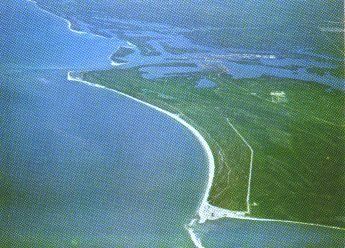
Marco 1964
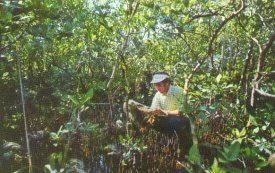
Mangrove Forest
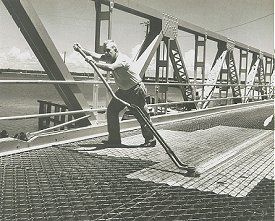
Original Bridge
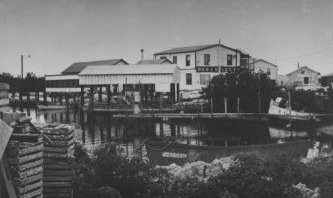
The Marco Lodge circa 1964

Hurricane Donna
This monstrous Cape Verde hurricane maintained Category 4 intensity throughout the majority of her life. Coming ashore in South Florida on September 10, 1960 as a Category 4 hurricane. Donna killed 60 people and caused nearly 2 billion dollars in damage.

Early Marco Resident
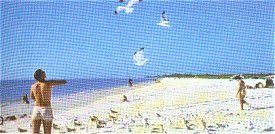
The Beach
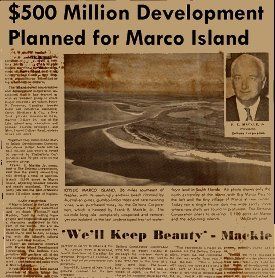
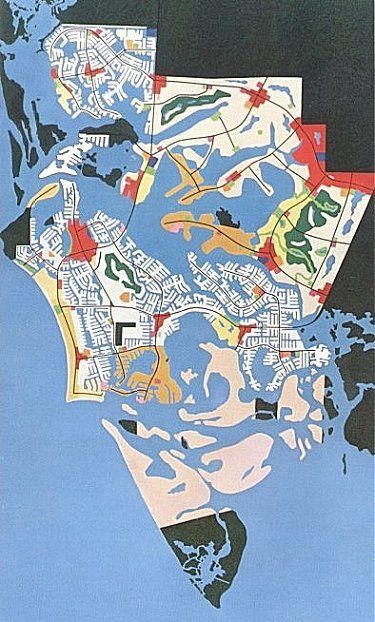
Marco Master Plan
(after 1969 acquisitions)

Marco Island Being Unveiled Today
"The Mackle Brothers, the most ambitious developers to operate in Florida since Carl Fisher transformed a mangrove jungle into the glittering city of Miami Beach, are at it again."
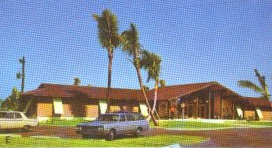
Sales & Administration Building
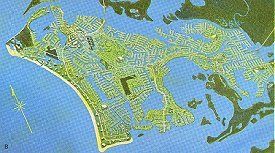
Scale Model

Original Waterfront Model Homes
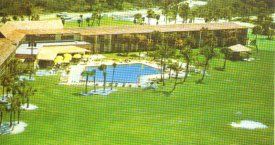
Marco Beach Hotel - 1965
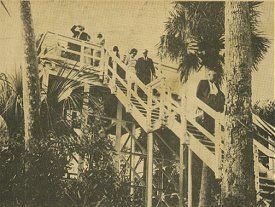
The Lookout Tower
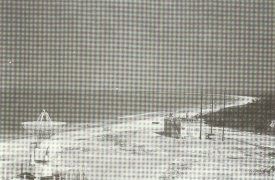
Construction Compound

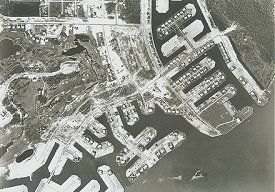
Progress Photo 12/7/67
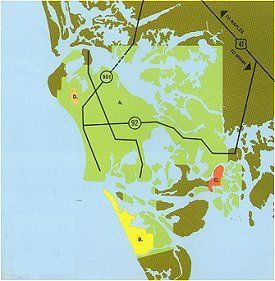
1968 Acquisition
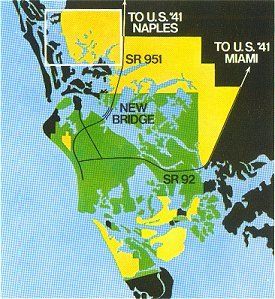
1968 & 1969 Acquisitions
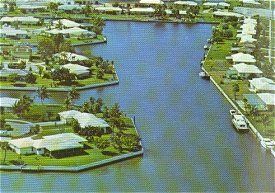
Marco Matures!
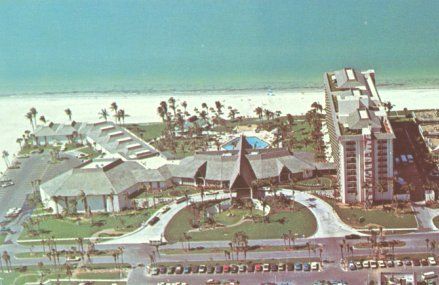
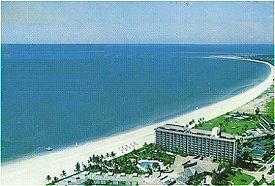
Marco Beach Hotel and Villas
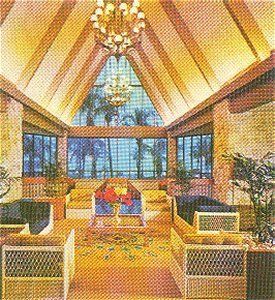
Hotel Lobby
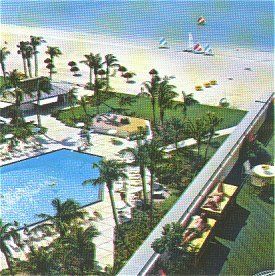
Pool
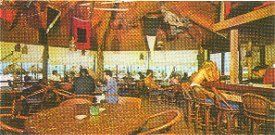
Quinns

Artist Rendering of the 1971 Club Expansion
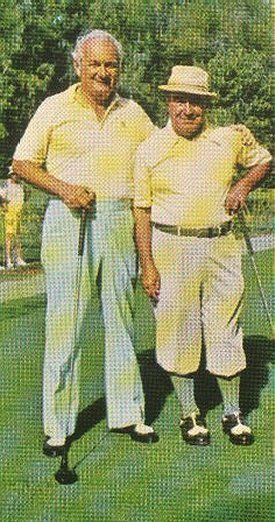
Dad and Gene Sarazen

Ken Venturi
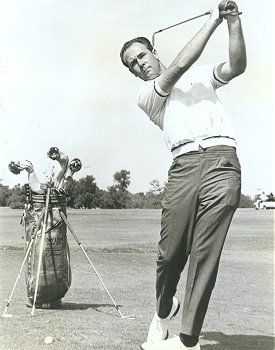
Tony Lema
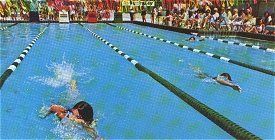
Pool and Cabanas
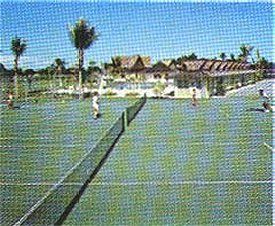
Tennis
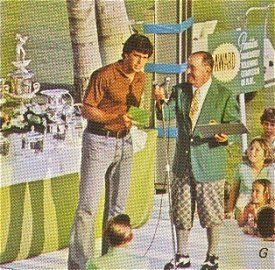
Gene Sarazen and Tim Foley announce the winners
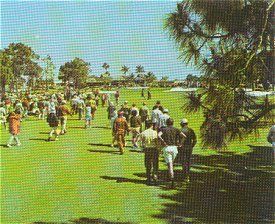
Tony Lema Memorial
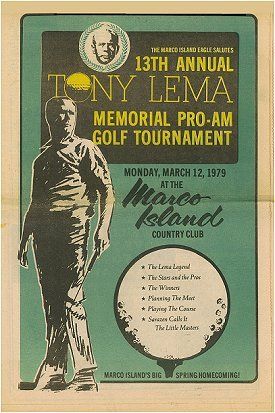
Marco Island Eagle Cover

Winn Dixie Shopping Center
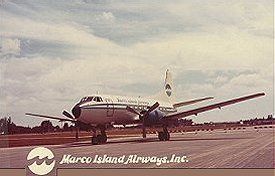
Marco Island Airways

New Bridge Open - 1970
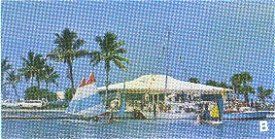
Marco Island Yacht Club
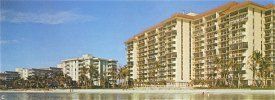
Hi Rise Condos
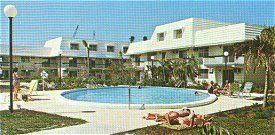
Garden Apartments
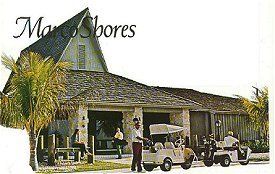
Marco Shores Country Club
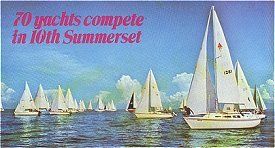
Summerset Regatta
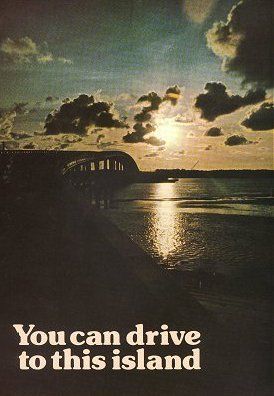
The Marco Islander
Winter/Spring 1976